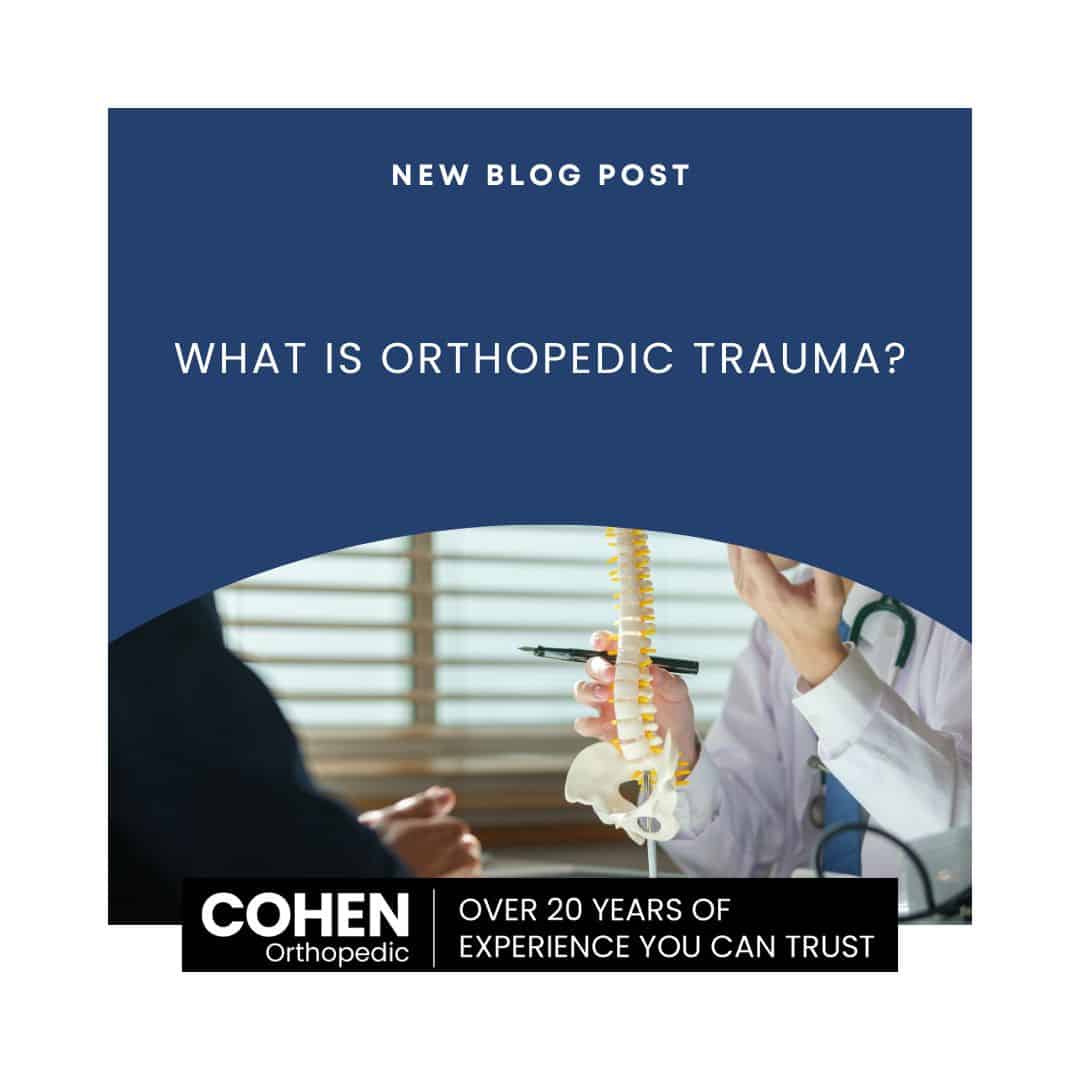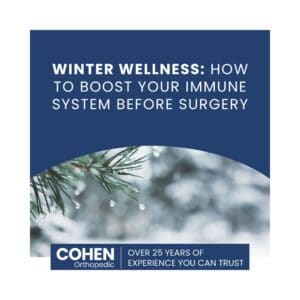What is Orthopedic Trauma?

Understanding Orthopedic Trauma: What It Is and How to Handle It
Orthopedic trauma refers to injuries that affect the bones, joints, muscles, ligaments, and tendons of the musculoskeletal system. These injuries can occur suddenly due to an accident, sports activity, or a fall, and they can range from mild sprains to severe fractures that require surgical intervention. In this blog, we’ll explore what orthopedic trauma is, common causes, how to recognize it, and the steps to take when it happens.
What Is Orthopedic Trauma?
Orthopedic trauma refers to any injury or damage to the musculoskeletal system resulting from a physical impact or stress. This type of trauma can involve:
- Fractures: Broken bones caused by a direct impact or force.
- Dislocations: When a bone is forced out of its normal joint position.
- Sprains and Strains: Injuries to ligaments (sprain) or muscles/tendons (strain) due to overstretching or tearing.
- Soft Tissue Injuries: Damage to muscles, tendons, and ligaments.
- Joint Injuries: Damage to the cartilage or ligaments that connect bones at the joints.
- Crush Injuries: Severe injuries that result in the compression of tissues, often requiring immediate medical attention.
Orthopedic trauma can vary from mild injuries, like a sprained ankle, to life-threatening situations, like compound fractures where bones break and pierce through the skin. The severity of the injury determines the course of treatment, which can range from conservative management (rest, ice, elevation) to surgical intervention.
Common Causes of Orthopedic Trauma
Orthopedic trauma can occur due to various causes, including:
- Sports Injuries: Contact sports, such as football or soccer, are prone to causing injuries like sprains, strains, fractures, and dislocations. Athletes are especially vulnerable to soft tissue and joint injuries.
- Falls: Falls are one of the most common causes of orthopedic trauma, particularly among the elderly. Fractures of the hip, wrist, or spine are often the result of a fall.
- Car Accidents: High-impact collisions in car accidents can cause severe trauma to the bones, muscles, and soft tissues, leading to fractures, spinal injuries, and dislocations.
- Workplace Accidents: Construction or manual labor jobs that involve heavy lifting, operating machinery, or working with tools can lead to traumatic injuries like fractures or sprains.
- Sports-related Activities: While certain sports are more prone to orthopedic trauma (e.g., football, rugby), even recreational activities like running or cycling can result in injury, such as stress fractures, tendonitis, or ligament sprains.
Signs and Symptoms of Orthopedic Trauma
Recognizing orthopedic trauma early is crucial for prompt treatment. Common signs and symptoms of musculoskeletal injuries include:
- Pain: Sharp, localized pain or throbbing in the affected area. Pain might worsen with movement or touch.
- Swelling: The area around the injury may become swollen or puffed up due to inflammation or bleeding.
- Bruising: Discoloration of the skin around the injury due to blood vessels being damaged.
- Deformity: In more severe cases, the affected area might appear misaligned or out of place (e.g., a dislocated joint or a visibly broken bone).
- Limited Mobility: Difficulty moving the injured limb or joint due to pain, swelling, or muscle spasms.
- Numbness or Tingling: If nerves are affected, you may experience a sensation of numbness or tingling around the injury.
If you suspect someone has experienced orthopedic trauma, it’s essential to take immediate action and seek medical care.
How to Handle Orthopedic Trauma: First Aid and Immediate Care
The first few minutes after an orthopedic injury are critical for preventing further damage and ensuring the best possible outcome. Here are the key steps for handling orthopedic trauma:
- Ensure Safety: First and foremost, ensure the person is in a safe location to prevent further injury, especially if they are near traffic or in a hazardous environment.
- Call for Help: If the injury is severe (e.g., broken bones, dislocations, or suspected spinal injuries), call emergency services immediately. Professional medical assistance is necessary to manage and treat the injury effectively.
- Control Bleeding: If there is external bleeding, apply pressure to the wound with a clean cloth or bandage to control the bleeding. If bleeding is severe and uncontrollable, it’s essential to seek medical help urgently.
- Immobilize the Injury: Avoid moving the injured area to prevent further damage. If a bone is visibly fractured, use a splint or any sturdy material (like a board or cloth) to immobilize the limb. For joint dislocations, avoid attempting to reposition the bone, as improper handling can cause more harm.
- Ice and Elevation: Apply ice to the injured area to reduce swelling and pain. Elevate the injured limb above the heart level to help reduce swelling. Never apply ice directly to the skin—use a cloth or towel to protect it.
- Pain Relief: Over-the-counter pain medications, such as ibuprofen or acetaminophen, can help manage pain until medical treatment is available. However, do not give pain medication if there is a risk of serious injury to the head, neck, or spine.
- Monitor for Shock: In severe cases, shock can occur due to significant blood loss or trauma. Signs of shock include rapid breathing, confusion, or pale, clammy skin. Keep the person warm and calm, and seek immediate medical help.
- Seek Professional Medical Care: Whether the injury seems minor or severe, it’s essential to see a healthcare provider for diagnosis and treatment. X-rays, MRIs, or CT scans may be needed to assess the extent of the injury.
Treatment and Recovery from Orthopedic Trauma
Treatment for orthopedic trauma depends on the severity and type of injury. Some common treatment options include:
- Rest and Rehabilitation: For mild injuries like sprains and strains, rest, ice, compression, and elevation (R.I.C.E.) can help. Physical therapy may be recommended for rehabilitation.
- Casting or Splinting: For fractures, a cast or splint may be used to immobilize the injured bone while it heals.
- Surgical Intervention: In the case of severe fractures, dislocations, or soft tissue injuries, surgery may be necessary to realign bones, repair ligaments, or replace damaged joints.
- Pain Management: Depending on the injury, pain medications may be prescribed to manage discomfort during the recovery period.
- Physical Therapy: After the initial healing process, physical therapy is often necessary to regain strength, flexibility, and function in the affected area.
Recovery time varies depending on the injury, with fractures often taking several weeks to months to heal fully, while soft tissue injuries might require less time but extensive rehabilitation to restore full function.
Preventing Orthopedic Trauma
While accidents can happen unexpectedly, certain precautions can help reduce the risk of orthopedic trauma:
- Wear Protective Gear: In contact sports or high-risk activities, always wear appropriate protective equipment like helmets, knee pads, and wrist guards.
- Stay Active and Strong: Regular exercise and strength training can help improve bone density, muscle strength, and joint stability, reducing the risk of injury.
- Fall Prevention: For older adults, maintaining a safe home environment (e.g., using grab bars, removing tripping hazards) can reduce the likelihood of falls.
- Practice Proper Technique: When engaging in sports or lifting heavy objects, ensure proper technique to avoid undue strain on the muscles and bones.
Final Thoughts
Orthopedic trauma can range from minor injuries to serious, life-altering conditions, but with prompt and proper care, most injuries can be effectively managed and treated. Knowing how to recognize symptoms and provide basic first aid can make a big difference in minimizing further damage. If you or someone you know experiences orthopedic trauma, always seek medical attention promptly to ensure the best possible outcome. By understanding what orthopedic trauma is and how to handle it, you can reduce the risk of complications and get on the path to recovery more quickly. Stay safe, and take proactive steps to protect your musculoskeletal health.










